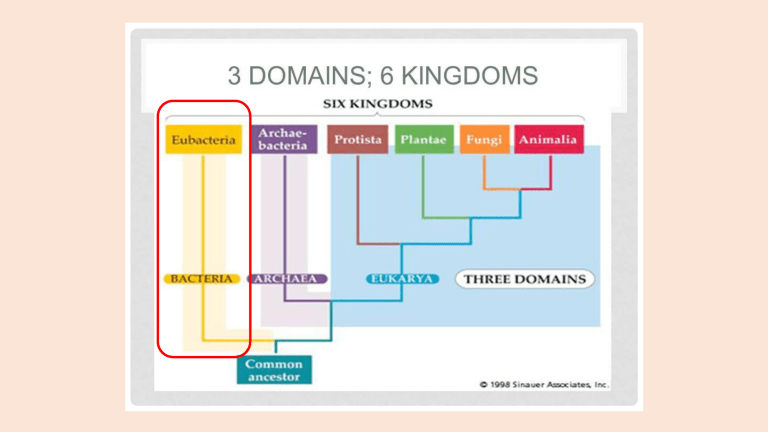
Ch 2.2a Kingdom Bacteria • Bacteria are Prokaryotes • They live as single cells, therefore unicellular • Their preferred method of reproduction is asexual reproduction by binary fission A) Classifying Bacteria 1. Shape • Cocci, or round (singular coccus) • Bacilli, or rod shaped (singular bacillus) • Spirilli, or spiral shaped (singular spirillus) 2. Arrangement • diplo describes bacteria cells arranged in pairs • staphylo describes bacteria cells arranged in clusters • strepto refers to bacteria cells arranged in a chain 3. Cell Wall Structure • Gram stain is used to highlight differences in the arrangements of amino acid and sugar molecules in bacterial cell walls 4. Nutrition/Energy Source • Most are heterotrophs (obtain energy from consuming other organisms) i) parasites (absorb nutrients from other living organisms) ii) saprobes (absorb nutrients from organic waste/dead decaying matter) • Others are autotrophs/phototrophs (make their own food using sunlight via photosynthesis) 5. Bacterial Reproduction i) Asexual (Binary fission) • Bacteria lack a nucleus, therefore, they cannot reproduce by mitosis or meiosis • Their genetic material is contained in a single chromosome within the cell • Steps of binary fission 1. As a bacterial cell grows, it makes a copy of its original, single chromosome. The cell elongates and separates the two chromosomes. 2. A septum (partition) begins to form and separates the elongated cell. 3. When the septum is complete, distinct cell membranes/ walls form. 4. The cells separate into 2 smaller, genetically identical cells. 5. Natural form of cloning in nature. 5. Bacterial Reproduction ii) Sexual (conjugation) • Occurs when conditions are unfavourable so bacteria have to adapt to change • The result of Conjugation is new cells with new genetic combinations 1. Bacterial cells become linked or connected to one another through a bridge like structure called a pilus, and then they exchange/transfer part of or all of their chromosomes/plasmids 2. Then... the bacteria cells separate and continue normal reproduction by themselves through Binary Fission 3. The only reason why Conjugation is classified as a form of sexual reproduction is because of the exchangeof DNA and therefore genetic diversity and not cloning! Conjugation B) Bacteria & Human Health 2.2b Kingdom Archaea • Organisms in this Kingdom are referred to as “extremeo-philes”, because they love extreme conditions (i.e. high salinity, high temperature, high acidity, etc...) • Archaea are Prokaryotes and unicellular • Scientists have identified 3 groups of Archaea based on their metabolism 1. Methanogens • Produce methane as waste • Live in anaerobic environments (below surface of swamps, in sewage disposal plants) • Use carbon dioxide, nitrogen gas, or hydrogen sulfide as a source of energy 2. Halophiles • Salt loving Archaea • Live in extremely salty environments (salt concentration can reach 37%...regular sea water is only 3.5% salinity) 3. Thermoacidophiles • Heat and acid loving Archaea • Live in extremely hot (above 80°C) and acidic environments • Can live in volcanoes and hot springs




